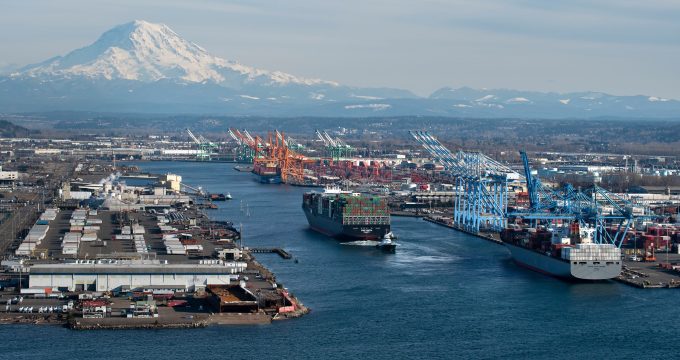US retailers look to consumers to save an industrial sector in the doldrums
US consumers are expected to step into the breach again to generate higher volumes of ...
GM: RAISING THE ROOF GGM: IN FULL THROTTLE GZIM: MAERSK BOOST KNIN: READ-ACROSSMAERSK: NOT ENOUGHMAERSK: GUIDANCE UPGRADEZIM: ROLLERCOASTERCAT: HEAVY DUTYMAERSK: CATCHING UP PG: DESTOCKING PATTERNSPG: HEALTH CHECKWTC: THE FALLGXO: DEFENSIVE FWRD: RALLYING ON TAKEOVER TALKODFL: STEADY YIELDVW: NEW MODEL NEEDEDWTC: TAKING PROFIT
GM: RAISING THE ROOF GGM: IN FULL THROTTLE GZIM: MAERSK BOOST KNIN: READ-ACROSSMAERSK: NOT ENOUGHMAERSK: GUIDANCE UPGRADEZIM: ROLLERCOASTERCAT: HEAVY DUTYMAERSK: CATCHING UP PG: DESTOCKING PATTERNSPG: HEALTH CHECKWTC: THE FALLGXO: DEFENSIVE FWRD: RALLYING ON TAKEOVER TALKODFL: STEADY YIELDVW: NEW MODEL NEEDEDWTC: TAKING PROFIT

Shippers are finding ways to differentiate themselves in market conditions that are becoming increasingly challenging, with 80% demanding greater visibility throughout their supply chains, according to a new survey.
Supply chain visibility provider Tive conducted a survey of 250 businesses, in collaboration with the Worldwide Supply Chain Federation, consultancy Charlie Pesti and Shipping and Freight Resource.
It says “supply chain visibility has risen in business criticality”, and is now critical for B2B operations as well as consumers.
“Clients now expect more co-operation and greater visibility from their vendors, irrespective of their position in the supply chain,” said Krenar Komoni, founder and CEO of Tive.
“Real-time visibility has become a true customer service differentiator and no longer a ‘good-to-have’.”
The concerns over visibility come in the context of declining demand for US imports; the National Retail Federation (NRF) reports that its Global Port Tracker (GPT) sees volumes remaining high compared with last year, but believes the peak season will see month-on-month reductions in throughput at US ports.
“Cargo volume is expected to remain high as we head into the peak shipping season, and it is essential that all ports continue to operate with minimal disruption,” NRF VP for supply chain and customs policy Jonathan Gold said.
Year-on-year increases in the first half in the 13 ports covered by the GPT are expected to go into reverse from August to the end of the year. The slowdown will start with a 0.8% drop next month and build to a 4.1% decline in October and 2.5% fall in November, according to the NRF report, compiled by Hackett Associates.
According to the NRF: “Ports saw a surge in activity this spring as a slowdown in cargo from Chinese factories closed by Covid-19 gave them a chance to clear built-up congestion. Retailers bringing in seasonal merchandise and importing other goods early to avoid any problems related to the contract negotiations may have also contributed to volume.”
Year-on-year declines during the second half of the year would be in contrast to the “unusually high numbers” in the same period last year, but the NRF warned: “Volumes remain high, and the full year is still expected to see a net increase over 2021.”
US imports last year totalled 25.8m teu, a 17.4% increase over 2020 record 22m teu, said the NRF. Its report says the total volume of loaded imports fell 63,000 teu between March and April, to 2.56m teu, a 2.4% decrease from March, but a 6% gain year on year.
Another cause for concern for importers is the possibility of industrial action, should negotiations between dockers’ unions and the terminal operators on the west coast break down. Any strike at the ports could quickly see a return to the major congestion difficulties of last year, severely curtailing shippers’ ability to move cargo.
This is of particular importance with the back-to-school and holiday seasons approaching in the US.
Matt Marshall, SVP at the two-way committed contracts enabler NYSHEX, advises that shippers can guard against delays by “sharing information, streamlining data collection and processing and standardising processes to prevent misallocated freight”.
Comment on this article